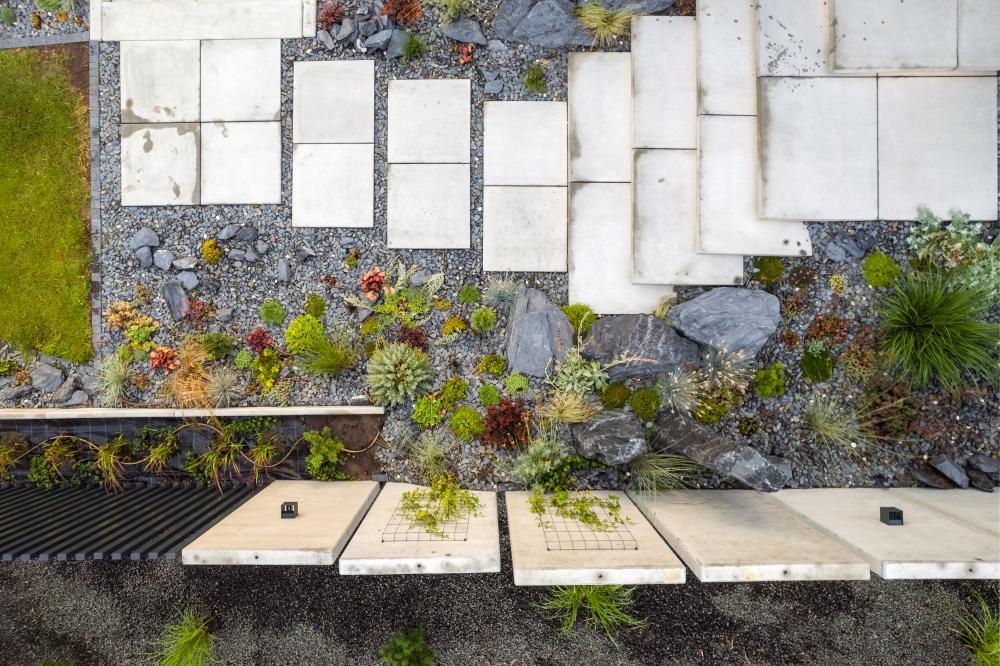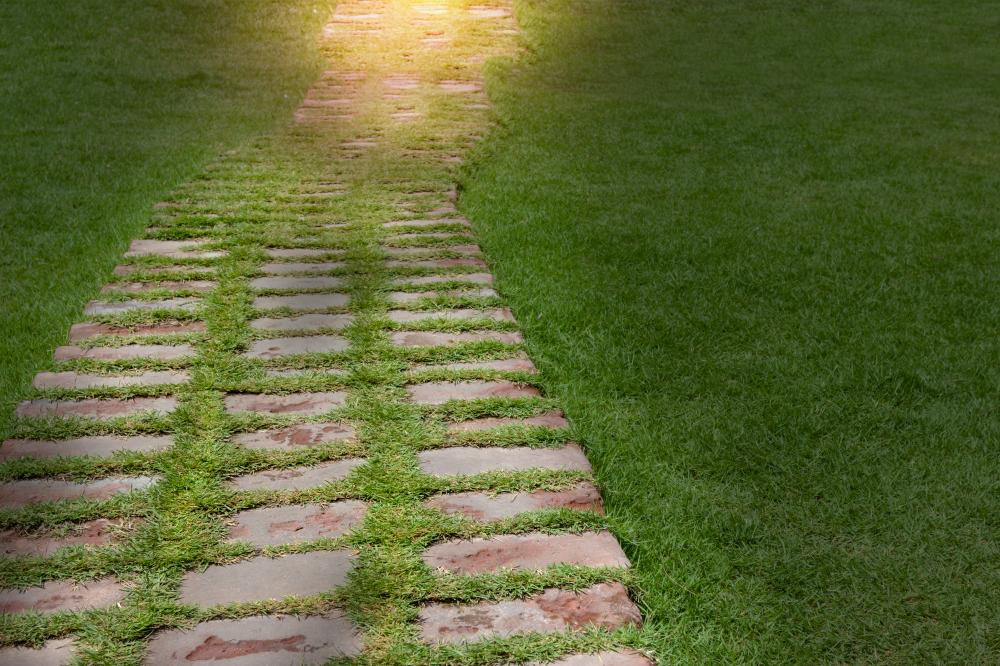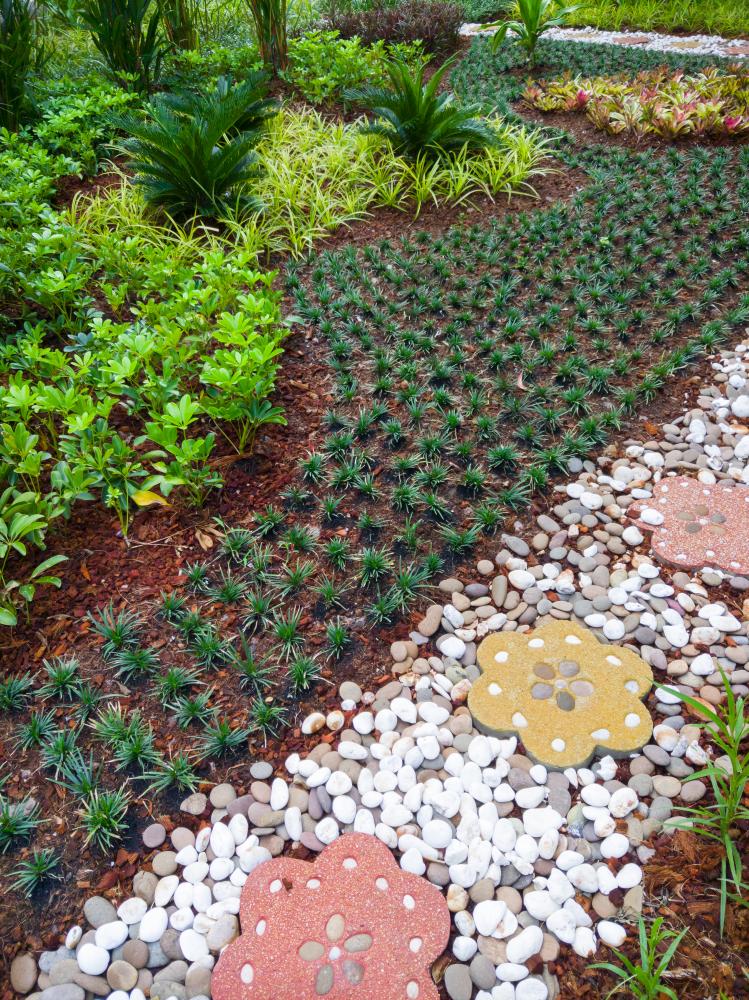
Creative Hardscaping Solutions
When thinking about Hardscape Ideas on a Budget, creativity often plays a major role. By using unconventional materials, it's possible to create an affordable yet stylish outdoor setting. For example, utilizing reclaimed wood or repurposed bricks can add a rustic charm that feels authentic and personal.
Another tactic involves sourcing materials locally. By visiting nearby salvage yards or estate sales, it's feasible to find unique pieces that can be incorporated into your design. This method not only saves money but adds a story to your outdoor space.
Creating features like walkways or patios using gravel or mulch can also reduce costs significantly. These materials are not only affordable but effective in creating functional pathways. They require minimal maintenance, making them a perfect choice for those seeking Hardscape Ideas on a Budget.
DIY Projects for Affordable Hardscaping
Undertaking DIY projects is another excellent approach when exploring Hardscape Ideas on a Budget. Building a fire pit from stacked stones or bricks allows for personalization. Consider the size and shape that fits your space, then gather materials, possibly from leftover projects.
Vertical gardening can bring life and color without increasing the budget. Old wooden pallets or even unused ladders can be transformed into vibrant vertical gardens. They add visual interest while maximizing the use of limited space.
Similarly, installing stepping stones made from broken concrete can create an intriguing pattern. This idea turns waste into a resource, fitting budget constraints perfectly. A little creativity can lead to surprisingly beautiful results!
Engage the family in painting or decorating these stones to add a playful touch. This not only reduces costs but also adds a personal flair. Remember, the key to successful DIY hardscaping is ingenuity and resourcefulness.
Sustainable Materials and Practices
Sustainability is crucial when considering Hardscape Ideas on a Budget. Opting for materials that minimize environmental impact can be both economical and ethical. Gravel and sand are excellent choices for sustainable hardscaping as they naturally enhance drainage and reduce soil erosion.
Choosing native plants to complement hardscaping elements reduces water usage and maintenance costs. These plants are adapted to local conditions, ensuring they thrive with minimal intervention. This choice supports local wildlife and contributes to ecological balance.
Consider incorporating bees or other pollinators into the landscape. At Kairos Landscaping, we understand the synergy between plant life and pollinators. Their presence revitalizes gardens and brings vibrancy to any hardscape design.
Using solar-powered garden lights enhances sustainability. Solar lights harness renewable energy, reducing electricity costs while providing necessary illumination for evening enjoyment.
Budget-Friendly Water Features
Incorporating water features is often viewed as expensive, but there are ways to integrate them economically into Hardscape Ideas on a Budget. Small DIY water fountains made from basic materials can add serenity to any setting. Use a simple recirculating pump to create a gentle waterfall or bubbling feature.
Ponds can also be budget-friendly if planned carefully. Utilizing pre-formed liners or repurposing containers allows for the creation of small, intimate water spaces. Adding water plants enhances aesthetics and supports local wildlife.
Regular maintenance is key to ensuring these features stay cost-effective. At Kairos Landscaping, we emphasize intelligent design paired with routine upkeep. This ensures beauty and functionality without large recurring expenses.
Integrating Native Plants
Native plants are ideal when aligning Hardscape Ideas on a Budget with environmental stewardship. They require less water, fertilizer, and pesticides, reducing ongoing expenses. Their resilience makes them perfect companions to any hardscape design.
At Kairos Landscaping, we look beyond aesthetics, focusing on ecological balance. Incorporating native species supports biodiversity and enhances the natural beauty of Central Florida landscapes. Their use reflects an understanding of local ecology and commitment to conservation.
Consider blending native flowering plants with hardscape features. This creates a colorful and textured backdrop, providing seasonal interest and supporting pollinators. The result is a harmonious blend of hardscape and softscape elements that feels both intentional and natural.
Planting in strategic locations ensures they complement hardscaping elements like patios or pathways. The collaboration between natural flora and constructed features creates a unified and pleasing landscape.

Repurposing and Sustainable Materials
In our quest to bring life to Central Florida's landscapes, we've found that using repurposed materials can achieve stunning results. Affordable Hardscaping Ideas often stem from the creativity of reusing items like pallets, bricks, or even recycled concrete. These materials not only cut costs but also contribute to sustainability, aligning with our mission to nurture the environment.
Using gravel or mulch as paths and ground cover is another favorite of ours. Both are remarkably affordable and bring a rustic charm to your yard. Not to mention, these materials provide excellent drainage, a significant advantage for Florida's sporadic showers. However, careful planning is needed to ensure they blend seamlessly with existing greenery and structures.
When opting for hardscape accents like rocks or boulders, consider sourcing them locally. This can significantly reduce transportation costs and supports the local economy, another cornerstone of our business ethos. Local stone can add a natural aesthetic that harmonizes with the surrounding landscape.
DIY Hardscaping Projects
Clients often ask us for Affordable Hardscaping Ideas that they can tackle on their own. One suggestion is to create a simple patio with pavers or stones laid over a sand base. This project requires minimal tools and offers a sense of accomplishment in transforming your own space. By planning the layout meticulously, you can avoid having to cut stones, which reduces complexity and waste.
Raised garden beds crafted from wooden pallets provide another DIY opportunity. These beds are excellent for planting flowers or herbs and offer functionality and charm. They also encourage sustainable gardening practices. Using untreated wood protects both your plants and the local ecosystem from harmful chemicals.
Incorporating elements like birdbaths or small fountains can elevate a yard without breaking the bank. Simple water features can use solar-powered pumps, providing a tranquil, eco-friendly addition to any garden. These can be created using reclaimed materials, which aligns well with our commitment to sustainability.
Practical Solutions for Small Spaces
In urban settings or for those with smaller yards, Affordable Hardscaping Ideas become especially valuable. Vertical gardens are an innovative solution, allowing you to maximize limited space. Installing planters on walls or fences brings greenery into the vertical plane, adding layers and depth to your landscape.
Consider also using compact, modular decking systems. These can be laid directly onto grass areas or over existing concrete to create a cozy seating area, making them ideal for limited spaces. They are often budget-friendly and simple to install, reflecting our customer-first philosophy.
Portable fire pits and outdoor furniture made from recycled materials can create a welcoming atmosphere. These elements are affordable and versatile, enabling quick rearrangements to suit any social occasion. Such features are not only practical but also add warmth and character to a compact space.
Integrating Edible and Pollinator-Friendly Elements
Our experience in combining landscaping with beekeeping has highlighted the appeal of edible gardens. Incorporating herbs and vegetables into your landscape design can reduce grocery costs and foster a connection with nature. Raised beds or container gardens are perfect for such integration.
Pollinator-friendly plants are a cornerstone of our practice. Affordable Hardscaping Ideas that include creating habitats for bees and butterflies enhance the ecosystem. Native plants are particularly effective, requiring less water and maintenance compared to non-native species. They thrive naturally in Florida's climate.
Incorporating native flowering plants along pathways or in clusters throughout your yard can create vibrant living tapestries. These additions not only beautify your space but also support local pollinators, aligning with our dual focus on ecological stewardship and aesthetic appeal.
Eco-Friendly Strategies
At Kairos Landscaping, we believe that Budget-Friendly Landscape Design should focus on eco-friendly strategies that benefit both the environment and your wallet. A great way to start is by selecting native plants. These plants are uniquely adapted to the Florida climate, requiring less water and maintenance. This not only saves money but also supports local wildlife and pollinators.
Adding pollinator-friendly plants to your landscape can enhance its beauty while supporting local bee populations. By incorporating both native and pollinator-friendly plants, we create a diverse and sustainable garden. This approach is practical and cost-effective, reducing long-term upkeep expenses.
We also emphasize sustainable irrigation techniques. Drip irrigation systems are an excellent option for conserving water. When paired with native plants, this strategy maximizes water savings and ensures a thriving landscape.
Creative Hardscaping
Creative hardscaping plays a significant role in Budget-Friendly Landscape Design. The use of affordable materials like mulch, gravel, and recycled bricks can transform outdoor spaces without overspending. We help homeowners create inviting patios or winding pathways that add functionality and charm.
Upcycling is another valuable tactic. Repurposing existing materials such as old wood or stones not only cuts costs but also adds unique elements to your landscape. The result is a personalized space that reflects the homeowner's style.
For lighting, solar-powered fixtures offer an eco-friendly alternative. These lights harness natural energy, minimizing utility costs while providing soft illumination for pathways and garden features. This simple addition enhances both safety and ambiance.
Pollinator-Focused Designs
Our expertise in pollinator-focused designs ensures that Budget-Friendly Landscape Design is not only cost-effective but also beneficial to local ecosystems. We strive to create vibrant gardens that attract bees, butterflies, and other pollinators.
Our approach includes the strategic use of flowering plants with varied bloom times. This ensures continuous nectar availability for pollinators. This thoughtful design enhances the beauty of your landscape while supporting ecological balance.
Edible Landscaping
Edible landscaping is another aspect of Budget-Friendly Landscape Design that can be both enjoyable and rewarding. By integrating vegetables, herbs, and fruit-bearing plants into your garden, you not only save on grocery bills but also create a sustainable food source.
Our team guides you in selecting the right edibles suited to your landscape conditions. Raised beds or container gardens can efficiently utilize space while improving soil quality. This approach makes it easier to manage your edible plants and boosts productivity.
Edible landscapes offer more than just food. Seasonal blooms and varying foliage create a dynamic and interesting garden. This diversity enhances aesthetic appeal, making your landscape as pleasing to the eye as it is to the palate.
Maintenance and Cost-Saving Tips
Regular maintenance is key to enjoying a flourishing garden on a budget. Our team at Kairos Landscaping provides essential tips to keep your costs low while maintaining a beautiful yard. Mulching with organic materials helps retain soil moisture and suppress weeds, reducing the need for frequent watering and herbicides.
Composting is another invaluable practice. Creating your compost from kitchen and yard waste yields rich soil amendments at no cost. This not only improves plant health but also recycles resources, reducing your environmental footprint.
Strategic lawn care, like mowing at the correct height and using grass clippings as mulch, enhances lawn health without additional expenses. These simple practices ensure your landscape remains lush and vibrant throughout the year.

What is the cheapest hardscape option?
At Kairos Landscaping, we often recommend using gravel or mulch as some of the most affordable hardscape options. Both are not only budget-friendly but also effective in creating functional pathways and ground cover. They offer excellent drainage, which is particularly beneficial in the Florida climate. Gravel and mulch are versatile and can be used in various landscaping projects to add texture and a rustic charm to your outdoor space. For those looking to make a big impact without a big price tag, these materials are perfect.
How much should you spend on a hardscape?
The cost of hardscaping varies widely depending on the scope of the project and the materials used. At Kairos Landscaping, we advocate for spending within a range that aligns with your budget and overall landscape goals. Typically, a good rule of thumb might be to allocate around 10-20% of your total landscaping budget to hardscaping. This ensures that you have enough to create durable and aesthetically pleasing elements without compromising other aspects of your garden or outdoor area. Remember, creativity can stretch your dollars further, as many stunning hardscapes can be achieved by repurposing materials or using local resources.
How to make a yard look nice for cheap?
Making a yard look appealing on a tight budget is all about creativity and resourcefulness. At Kairos Landscaping, we emphasize the use of native plants, which require less water and maintenance, thereby reducing costs. Incorporating vertical gardening with affordable materials like old pallets or ladders can add depth and interest without a hefty investment. Additionally, utilizing local materials like rocks, sand, or even repurposed wood can enhance the landscape's visual appeal while keeping costs low. Simple touches like solar-powered lighting can also make a huge difference, creating ambiance without raising your electricity bill. Have you considered how seasonal changes could help you continuously update your yard's look without significant expenses?
What is the most low maintenance landscaping?
Low-maintenance landscaping focuses on minimizing labor and resource inputs while maximizing enjoyment and visual appeal. From our experience at Kairos Landscaping, integrating native plants is essential—they thrive in the local climate, reducing the need for intensive care. Pairing these with gravel or mulch pathways provides a clean, low-maintenance surface. When it comes to hardscape, choosing durable, weather-resistant materials like stone or concrete can reduce the need for frequent repairs. Additionally, incorporating automatic drip irrigation systems can significantly cut down on water use and time spent watering manually. By creating a sustainable design, you can enjoy a beautiful yard with minimal upkeep. What's one aspect of maintenance you'd love to reduce in your current landscape design?
#### Resources for Hardscaping and Sustainable Landscaping Solutions- U.S. Environmental Protection Agency (EPA) – The EPA provides resources for sustainable landscaping practices, including information on eco-friendly materials and techniques for reducing environmental impact.
- National Park Service (NPS) – The NPS offers guidance on using native plants and sustainable gardening practices that help preserve natural ecosystems.
- U.S. Forest Service – The U.S. Forest Service provides valuable insights on sourcing materials locally and sustainably integrating native flora into landscaping projects.
- University of Minnesota Landscape Arboretum – This educational resource is a great source for learning about sustainable landscaping and practical gardening tips, emphasizing biodiversity and environmental stewardship.
- ENERGY STAR – ENERGY STAR offers insights into energy-efficient outdoor solutions, such as solar-powered lighting, that can enhance the sustainability of your landscape design.
- U.S. Department of Agriculture (USDA) – The USDA provides comprehensive information on plant hardiness zones and best practices for utilizing native plants in your landscaping efforts.
